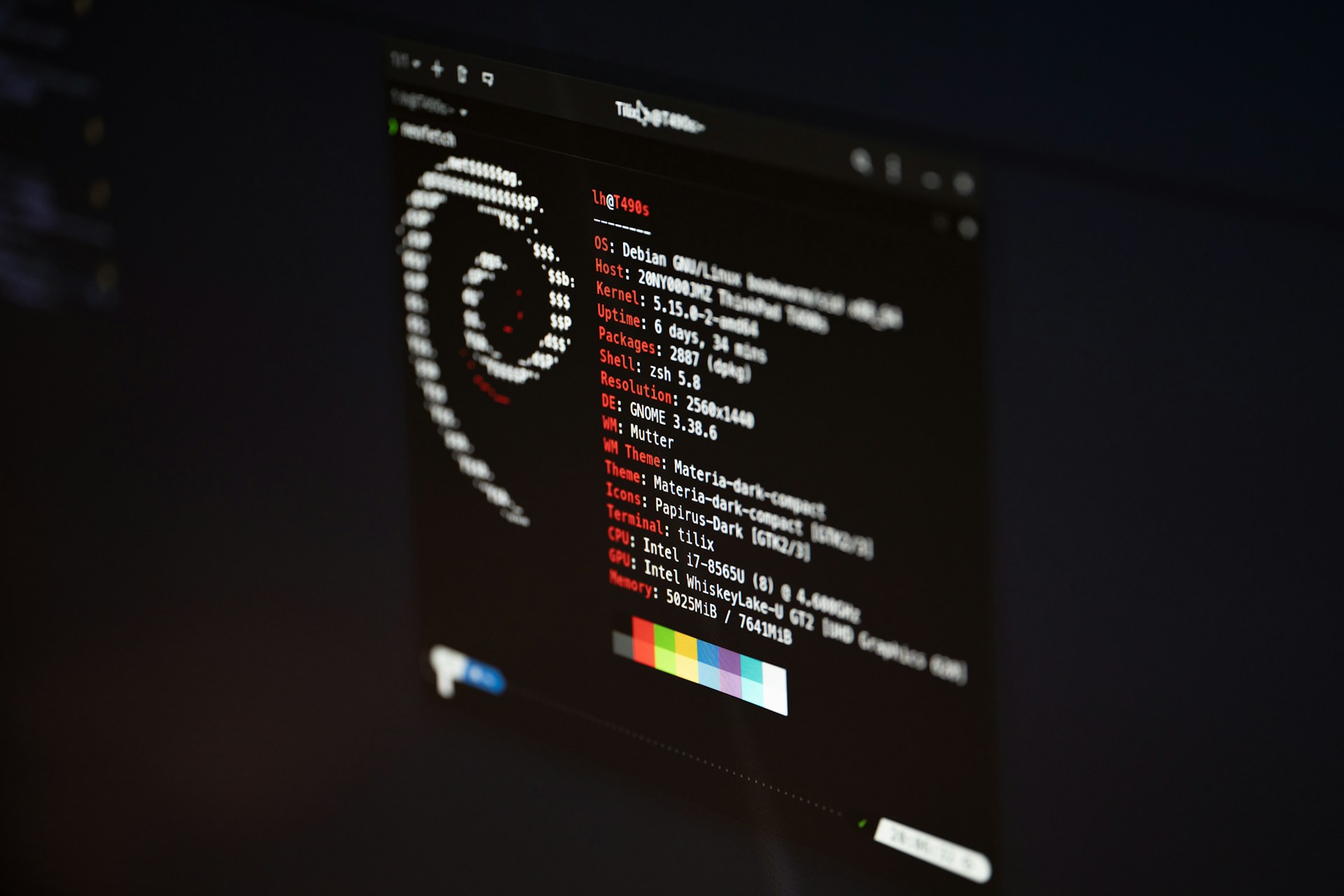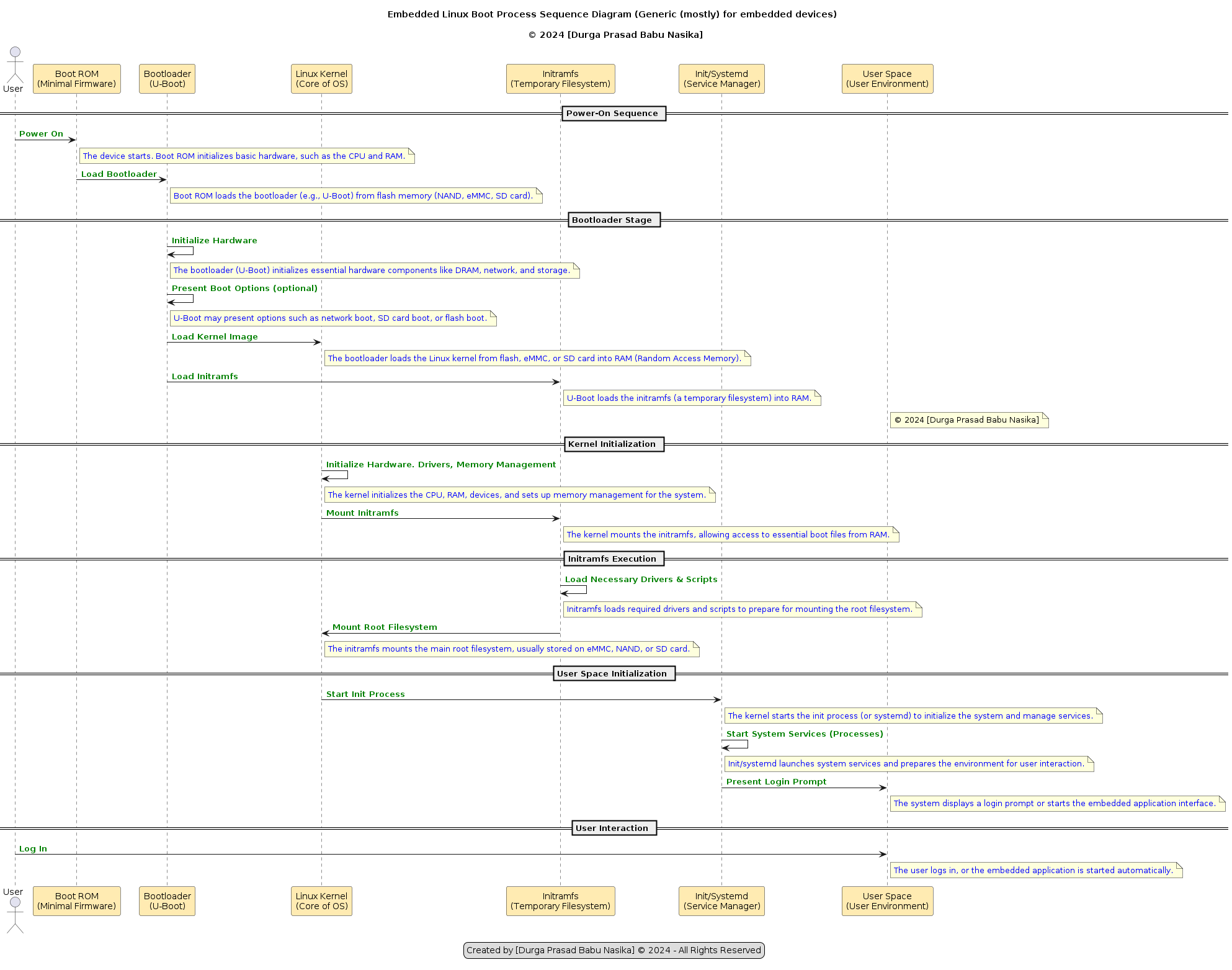"Awakening the Machine: The Silent Symphony of Embedded Linux Boot"
 DP Nasika
DP Nasika
Have you ever wondered what truly happens the moment you power on an embedded device? Beyond the blinking LEDs and startup screens lies a fascinating, intricate process that quietly unfolds in the background. How does the system go from complete stillness to a fully functional operating environment? What invisible steps bring Linux to life in these compact devices? Let’s peel back the layers and explore the journey your embedded system takes from power-on to operation — a hidden sequence that’s both elegant and essential.
In short here is the sequence diagram on how the boot process works..!!!

Boot ROM
The boot process begins with the Boot ROM, a small piece of firmware stored on the device. When you turn on the device, the Boot ROM runs a Power-On Self-Test (POST) to ensure that the essential hardware components, like the processor and memory, are functioning correctly. Think of this step as a quick health check to confirm everything is ready for action.
Bootloader
Once the POST is complete, the Boot ROM loads the bootloader from a designated location in the device's memory (typically Flash memory). The bootloader is a crucial program that prepares the hardware and environment needed to load the operating system. Common bootloaders used in embedded Linux systems include U-Boot and Das U-Boot. You can think of the bootloader as the device's personal assistant, getting everything in order before the main event.
Kernel Loading
After initializing the hardware, the bootloader loads the Linux kernel into memory. The kernel is the core component of the operating system that manages hardware and software interactions. Often, the kernel is a compressed image, such as zImage or bzImage. In some cases, the bootloader may also load an initial RAM disk (initramfs), which contains essential drivers and utilities needed for booting. Imagine the kernel as the director of a movie, coordinating all the various parts to ensure everything runs smoothly.
Kernel Initialization
Once the kernel is loaded, the bootloader hands over control to it. The kernel then performs critical tasks, such as initializing the system hardware, mounting the root filesystem, and setting up the environment for user space. This phase is akin to setting the stage before the performance begins, ensuring that all the technical elements are ready for action.
Init Process
After the kernel has completed its initialization, it starts the init process, which can be managed by modern equivalents like systemd or initramfs. This process is responsible for launching essential system services and initializing user space programs. Think of the init process as the stage manager, starting up all the background activities necessary for the main show.
User Space Initialization
Once the init process is up and running, the system transitions to user space. Here, various services and applications begin to load based on configuration files. This step includes tasks like setting up network connections, initializing device drivers, and running user applications, such as those that enable internet connectivity or read sensor data. It's like the audience arriving and getting settled for the performance.
User Login
Finally, the boot process concludes with the user login interface, allowing users to access the system and interact with the device. This is the moment when the device transforms from a powered-off state to being fully operational, ready to perform its intended tasks. In layman’s terms, it’s like the curtain rising on the stage, revealing everything the device can do.
Thank you for joining me on this exciting journey through technology, AI, robotics, and entrepreneurship! There’s so much happening behind the scenes that shapes our world and influences how we live and work. I hope you're eager to learn more about these captivating tech topics and some philosophical topics, so stay tuned for upcoming articles.
If you need any help or expert guidance in development, or if you're interested in collaborating on tech projects, feel free to reach out. Whether you have questions, want to brainstorm ideas together, or are looking to ship a hardware or software product, hands on development of software, or Integration , I'm here to support you on your journey with my experience..!!
Subscribe to my newsletter
Read articles from DP Nasika directly inside your inbox. Subscribe to the newsletter, and don't miss out.
Written by

DP Nasika
DP Nasika
Hello! I’m DP, a tech entrepreneur with a deep passion for robotics, software development, and artificial intelligence. I also love hardware hacking and often engage in reverse engineering activities.